Catocala habilis
Catocala habilis
kah-TOCK-uh-lahMHAB-ih-lis
Grote, 1872
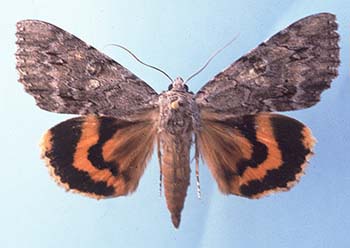
The Habilis Underwing,
by James K. Adams.
This site has been created by
Bill Oehlke at oehlkew@islandtelecom.com
Comments, suggestions and/or additional information are welcomed by Bill.
| TAXONOMY:
Superfamily: Noctuoidea
Family: Noctuidae
Group: Noctuinina
Subfamily: Catocalinae
Genus: Catocala, Schrank, 1802
| |
MIDI MUSIC
"Moon River"
copyright C. Odenkirk
MIDI CITYON.OFF
<bgsound src="moon.mid" LOOP=FOREVER>
|
DISTRIBUTION:
It has also been reported in
District of Columbia,
Georgia,
Illinois,
Indiana,
Iowa,
Kansas,
Kentucky,
Maine,
Maryland,
Massachusetts,
Michigan,
Minnesota,
Missouri,
Nebraska (LJP),
New Hampshire,
New York,
Ohio,
Pennsylvania,
Rhode Island,
South Dakota,
Tennessee,
Vermont,
Virginia,
West Virginia and
Wisconsin.
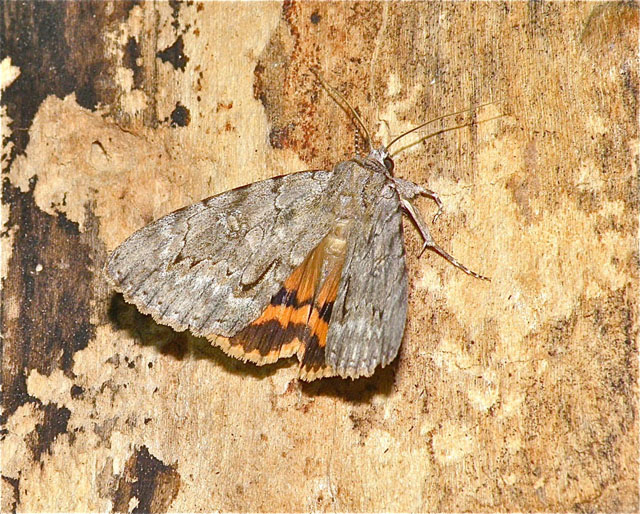
Catocala habilis, Fontenelle Forest, Bellevue, Sarpy County, Nebraska,
August 10, 2012, courtesy of Loren J. Padelford.
Many thanks to Loren J. Padelford who supplies the image of Catocala habilis above. Prior to Loren's submission, I do not believe
Catocala habilis had been recorded in Nebraska.
Visit Catocala habilis, Athol, Worcester County, Massachusetts,
August 23, 2009, September 1, 9, 2011, courtesy of Dave Small.
Visit Catocala habilis, Amherst, Hampshire Co., Massachusetts, Aug. 12, 2011, Joshua S. Rose.
The specimen described as denussa, Ehrman, 1893, is an aberrant melanic form of Catocala habilis.
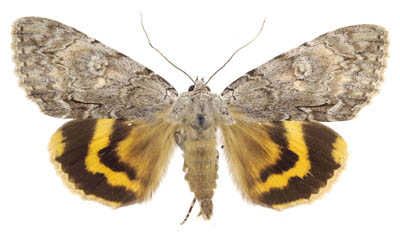
Catocala habilis Canadian Biodiversity Information Facility
FLIGHT TIMES AND PREFERRED FOOD PLANTS:
In northern
portions of its range, Catocala habilis flies as a single
generation with moths on the wing from mid July to early
October (rare).
In more southerly locales there may be multiple flights with moths
on the wing from early June, but it is generally accepted that all
Catocala species are univoltine.
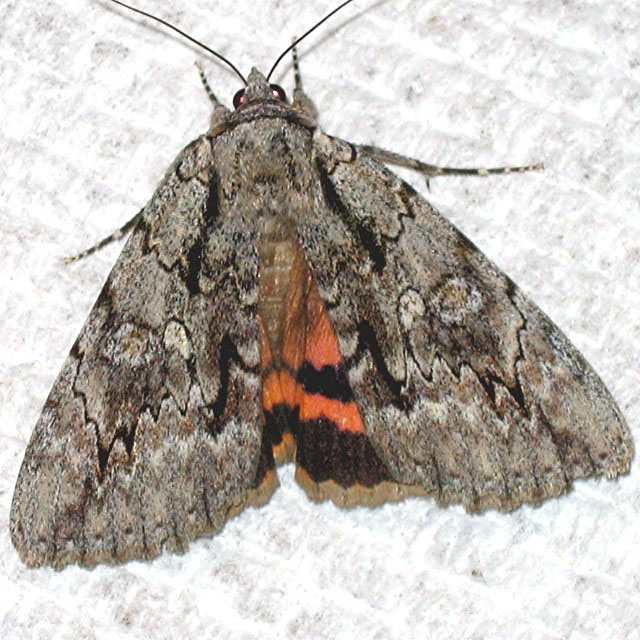
Catocala habilis, Stillwater Township, Sussex County, New Jersey,
August 27, 2005, courtesy of Joe Garris.
Note the large "M" on the thorax and the "pork chop" shaped,
light coloured subreniform spot that
constricts at the juncture with the postmedian line.The pm line
is narrow but dark and distinct, and the two largest, produced "teeth" tend
to be darker than the other projections. The pm line is outwardly lined with a narrow
suffusion of white scales, followed by a broader band of brown-grey scales,
and then another broader suffusion of white scales up to a very
regular dentation of the subterminal line. There is always
significant "bleeding" of the yellow-orange to salmon scales into the
hindwing fringes.
The reniform spot has a brown center, faintly edged with black, then white,
then black again.
There are usually two dark bars on the forewing, one across the basal area, and one
paralleling the inner margin, just below the lowest "tooth" of the pm line. The basal dark bar is sometimes absent.
Wing veins in forewing postmedian area have a grey, feathery appearance, against a lighter background.
Image courtesy of Maurice Bottos, Windsor, Ontario,
August 30, 2008. |
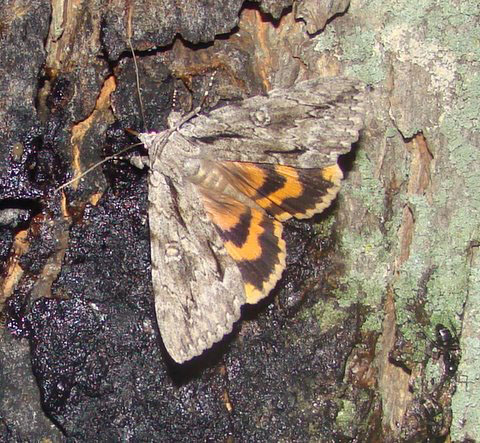 |
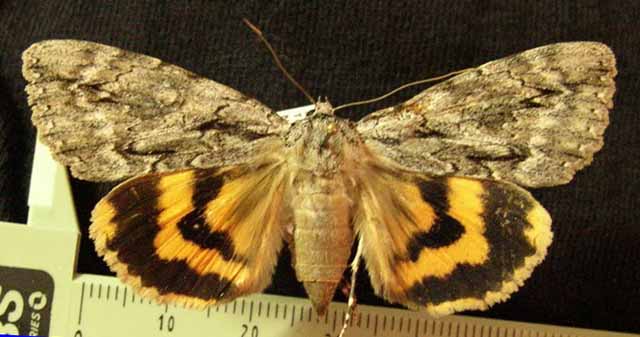
Catocala habilis, The Habilis Underwing, Trout Valley,
(McHenry County) Illinois,
August 21-26 -- Sept 6, sugar bait,
courtesy of Scott Boutilier.
The Catocala habilis caterpillar shows a preference for
Carya ovata (shagbark hickory), Fraxinus pennsylvanica (green ash),
and Juglans cinerea (butternut) and Juglans nigra (black walnut).
Moths come in to lights and to bait.
ECLOSION:
Adults eclose from pupae formed under leaf litter.
SCENTING AND MATING:
Catocala habilis females
emit an airbourne pheromone and males use their antennae to track the
scent plume. This is a sexually dimorphic species.
EGGS, CATERPILLARS, COCOONS, AND PUPAE:
Eggs are deposited on tree bark in the fall and hatch the following spring.
Mature larvae Image courtesy of |
 |
Larval Food Plants
Listed below are primary food plant(s) and alternate food plants.
It is hoped that this alphabetical listing followed by the common
name of the foodplant will prove useful. The list is not exhaustive,
although some species seem very host specific.
Experimenting with closely related foodplants is worthwhile.
Carya ovata
Fraxinus pennsylvanica.....
Juglans cinerea
Juglans nigra
|
Shagbark hickory
Green ash
Butternut
Black walnut
|
This page is brought to you by Bill Oehlke and the
WLSS. Pages are on space rented from Bizland. If you would like to become a "Patron of the Sphingidae/Catocala Sites",
contact Bill.
Please send sightings/images to Bill. I will do my best to respond to requests for identification help.
Enjoy one of nature's wonderments: Live Saturniidae (Giant Silkmoth) cocoons.

|

To show appreciation for this site, click on the flashing
butterfly to the left, a link
to many worldwide insect sites. |
Return to Canadian Index
Return to Main Index







